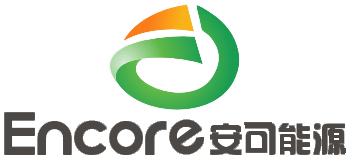- English
- Español
- Português
- русский
- Français
- 日本語
- Deutsch
- tiếng Việt
- Italiano
- Nederlands
- ภาษาไทย
- Polski
- 한국어
- Svenska
- magyar
- Malay
- বাংলা ভাষার
- Dansk
- Suomi
- हिन्दी
- Pilipino
- Türkçe
- Gaeilge
- العربية
- Indonesia
- Norsk
- تمل
- český
- ελληνικά
- український
- Javanese
- فارسی
- தமிழ்
- తెలుగు
- नेपाली
- Burmese
- български
- ລາວ
- Latine
- Қазақша
- Euskal
- Azərbaycan
- Slovenský jazyk
- Македонски
- Lietuvos
- Eesti Keel
- Română
- Slovenski
- मराठी
- Srpski језик
Lipo Battery Usage
2023-05-12
Lipo Battery Usage
2023-5-12
Charge
Be very careful when charging lithium-ion batteries. The basic concept is to first charge each battery cell with a constant current of 4.2 V. Then the charger must switch to constant voltage mode. As the charging current decreases, the charger must maintain the battery cell at 4.2 V until the current drops to a certain proportion of the initial charging current and stop charging. Some manufacturers set the specifications at 2% -3% of the initial current, although other values are also acceptable, the difference in battery capacity is small.
Balanced charging means that the charger monitors each battery cell and charges each cell to the same voltage.
Trickle charging method is not recommended for lithium batteries. Most manufacturers set the maximum and minimum voltage of battery cells at 4.23V and 3.0V, and any battery cell that exceeds this range may affect the overall battery capacity.
Most good lithium polymer chargers also use a charging timer that automatically stops charging when the time is up (usually 90 minutes) as a safety device.
The lithium-polymer battery with a charging rate of up to 15C (i.e. a battery capacity of 15 times the charging current, approximately 4 minutes of charging) was achieved by a new type of nanowire lithium-polymer battery in early 2013. However, this is still a special case, and the generally recommended 1C charging rate is still the standard for remote control model players. No matter how much charging current the battery can withstand, it is important that a lower charging rate can extend the service life of the aircraft model battery. [2]
Discharge
Similarly, continuous discharge of up to 70C (with a current of 70 times the battery capacity) and instantaneous discharge of 140C were also achieved in mid-2013 (see paragraph "Remote Control Model" above). The "C number" standards for both types of discharge are expected to increase with the maturity of nano lithium polymer battery technology. Users will also continue to improve their usage, pressing the limits of these high-performance lithium-ion batteries. [2]
Limit
All lithium-ion batteries have a high state of charge (SOC), which may lead to issues such as layer separation, reduced lifespan, and reduced efficiency. In hard batteries, a hard shell can prevent pole layer separation, but the flexible lithium polymer battery pack itself does not have such pressure. To maintain performance, the battery itself requires an outer shell to maintain its original shape.
Overheating of lithium-ion batteries may cause expansion or ignition.
During load discharge, when any battery cell (in series) is below 3.0 volts, the load power supply should be immediately stopped, otherwise it will cause the battery to not be able to return to a fully charged state. Or it may cause a significant voltage drop (increase in internal resistance) during load power supply in the future. This issue can be prevented from overcharging and discharging the battery through chips connected in series with the battery.
Compared to lithium-ion batteries, the charging and discharging cycle life of lithium-ion batteries is less competitive.
To prevent explosions and fires, lithium-ion batteries need to be charged using a charger specifically designed for lithium-ion batteries.
If the battery is directly short circuited or passes through a large current in a short period of time, it may also cause an explosion. Especially in remote control models with high battery demand, players will carefully pay attention to connection points and insulation. When the battery is perforated, it may also catch fire.
When charging, a dedicated charger should be used to evenly charge each sub battery cell. This also leads to an increase in costs. [2]
Extending the service life of multi-core batteries
There are two ways of mismatching in battery packs: a common mismatch in battery state (SOC, percentage of battery capacity) and a mismatch in capacity/energy (C/E). Both of these will limit the capacity of the battery pack (mA · h) by the weakest battery cell. In the case of series or parallel connection of batteries, the front analog end (AFE) can eliminate the mismatch between batteries, greatly improving battery efficiency and overall capacity. The possibility of battery mismatch increases with the number of battery cells and the increase of load current.
When the cell in the battery pack meets the following two conditions, we call it a balanced battery:
If all battery cells have the same capacity and have the same relative state of charge (SOC), it is called balance. Open circuit voltage (OCV) is a good SOC indicator in this situation. If all the battery cells in an unbalanced battery pack are charged to their fully charged state (i.e. balanced), the subsequent charging and discharging cycles will also return to normal without the need for additional adjustments.
If there are different capacities between battery cells, we still refer to the state where all battery cells have the same SOC as equilibrium. Due to the fact that SOC is a relative measurement value (the remaining discharge percentage of the cell), the absolute remaining capacity of each battery cell is different. In order to maintain the same SOC between battery cells of different capacities during the charging and discharging cycle, the balancer needs to provide different currents between different battery cells in series.



